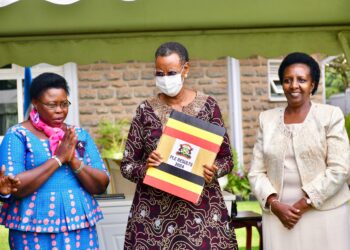Before the days of social media, television was our main source of news and information, along with radio and newspapers. It was also a staple in our homes, influencing how we set up our living spaces.
When I was in college, just like many of my friends, having a TV was a big deal. So, when I received my first Faculty allowance (known as ‘Boom’), I invested it in a 21-inch colour TV. It was a huge milestone for me. With a simple outdoor antenna, I could access a variety of local and even some international channels without the need for a subscription, decoder, or satellite dish. All I needed was a TV set, a power source, and an antenna.
For TV broadcasters, they had their own transmitters and broadcast towers. The larger stations, like UBC and WBS, reached a wide audience across the country, while smaller stations like LTV, Sanyu TV, and others had more localised coverage.
But everything changed on June 17, 2015, when Uganda transitioned from analog to digital TV in compliance with international regulations. The Minister of ICT back then praised the move, expecting benefits like the ‘digital dividend,’ new business opportunities, better picture quality, and support for local content.
Did we truly realize these benefits? We did see the digital dividend, which freed up frequency spectrum for telecom companies to use for LTE. But the promise of new business opportunities is still uncertain. While more TV stations have emerged, the gains in picture quality and local content haven’t been as impressive. That’s because all content now has to go through TV channel aggregators like Signet, which has made maintaining high quality a challenge.
The UBC Challenge
At the beginning of the digital migration, UBC was assigned the role of the sole signal distributor for the first five years, with the plan to separate content and signal distribution services. The Uganda Communications Commission (UCC) supported this by financing and setting up at least 17 broadcast sites across the country.
However, today, only the Kololo DTT transmission system in the greater Kampala area remains active, even though it’s dealing with aging equipment and sporadic power issues. The other 17 sites in different regions have been inactive for years. So, for most Ugandans outside of Kampala, watching TV means paying a ‘subscription tax’ to pay-TV providers in South Africa and China, the dominant players in the industry. This also means that Ugandan content and culture take a back seat, as local stations are only a minor part of larger pay-TV packages.
Is It Possible for Signet to Be Self-Sufficient?
In its current form, Signet faces challenges in becoming self-sustaining. While TV stations are supposed to pay twelve million Ugandan shillings each month for carriage fees, their limited reach and other issues restrict their revenue. This is made worse by the fact that Signet and UBC were never fully separated as originally planned. So, the funds that should have supported their role in signal distribution end up paying off UBC’s debts.
Even in Kampala, Signet’s equipment is aging and can’t keep up with the more than 49 licensed stations. They can only carry 36 stations with a lower picture quality. Additionally, every time the power goes out in Kololo, channel numbers change, and viewers have to rescan for channels and wait for buffering to finish. Sometimes, the picture comes without sound, or it might not come at all, requiring late-night calls to restore the signal.
The Challenge of Hybrid License Fees for Free-to-Air.
Most TV stations in Uganda aim to serve Ugandans in the country, with international audiences reached through digital platforms. However, Signet’s limitations force TV station owners to get hybrid licenses to reach their intended audience. While a regular Free-to-Air license costs only 2700 USD, TV owners now have to pay at least 46,000 USD and 22,000 USD annually for a hybrid license, which they don’t actually need but must get to be carried by pay-TV platforms.
This situation is made worse because pay-TV providers often don’t carry Free-to-Air channels, despite promises from the Minister of ICT during the early stages of digital migration. So, citizens end up paying for pay-TV subscriptions, even if their preferred channels are local ones that should be free. This leaves those with limited means without access to information that should be readily available through Free-to-Air TV.
The Role of Government in Supporting Signet
Access to information is crucial for the development of our nation. Many national programs and important announcements are primarily communicated through television, which also plays a key role in emergency and disaster alerts. With more affordable TVs and improved access to electricity across the country, television continues to shape Ugandan culture and lifestyle.
This makes it essential for citizens to have unrestricted access to Free-to-Air TV. Last year, the parliamentary committee on ICT recommended that Signet be separated from UBC and receive funding of 17 billion Ugandan shillings to ensure its full functionality. Recent information suggests that funds have been allocated for this purpose in the budget. It’s critical that Signet is empowered to provide TV services to citizens across the country. If direct government funding isn’t possible, perhaps the UCC can use the Rural Communication Fund for this purpose.
The Writer is a media owner and the V/Chairperson NAB
Do you have a story in your community or an opinion to share with us: Email us at editorial@watchdoguganda.com













